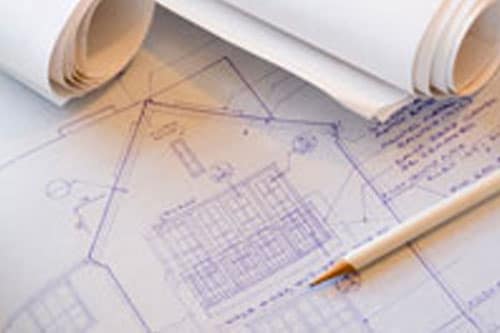[av_section min_height=” min_height_px=’500px’ padding=’default’ shadow=’no-shadow’ bottom_border=’no-border-styling’ scroll_down=” id=” color=’main_color’ custom_bg=” src=” attach=’scroll’ position=’top left’ repeat=’no-repeat’ video=” video_ratio=’16:9′ video_mobile_disabled=” overlay_enable=” overlay_opacity=’0.5′ overlay_color=” overlay_pattern=” overlay_custom_pattern=”]
[av_heading heading=’Lumber Buying Guide: A Comprehensive Overview’ tag=’h1′ style=” size=” subheading_active=” subheading_size=’15’ padding=’10’ color=” custom_font=” custom_class=”][/av_heading]
[av_textblock size=” font_color=” color=” custom_class=”]
Heading to the lumber yard to pick up some lumber for your project seems like a fairly simple process. However, once you are there, ensuring that you are choosing the right type and quality of lumber you need for your project can be confusing. A quality lumber yard can help point you in the right direction, but it is helpful to have a basic understanding before you reach that point. To help gain that understanding, we have created a brief but comprehensive lumber buying guide. In this article, we will talk about the general considerations involved with your lumber purchase. More detailed information is available about softwoods in our Softwood Lumber Buying Guide. For information about hardwoods and plywood, check out our Hardwood and Plywood Lumber Buying Guide.
[/av_textblock]
[av_two_third first min_height=” vertical_alignment=” space=” custom_margin=” margin=’0px’ padding=’0px’ border=” border_color=” radius=’0px’ background_color=” src=” background_position=’top left’ background_repeat=’no-repeat’ animation=” mobile_display=”]
[av_heading heading=’Lumber Types’ tag=’h2′ style=” size=” subheading_active=” subheading_size=’15’ padding=’10’ color=” custom_font=” custom_class=”][/av_heading]
[av_textblock size=” font_color=” color=” custom_class=”]
On a basic level, there are two types of lumber, hardwoods and softwoods. Softwoods come from coniferous trees (pine) and hardwoods from deciduous trees (oak/maple). Depending on your project, you need to decide which is best. Coniferous trees grow faster than deciduous trees. Because of this slow growth, the wood becomes denser and, therefore, harder than softwoods. Softwoods are more easily dented and scratched than hardwoods. However, hardwoods are more costly simply because they are not as plentiful as the softer woods. The type of lumber is the most basic denominator overall, but there are many different qualities, strengths, types, sizes, and other characteristics for each.
[/av_textblock]
[/av_two_third][av_one_third min_height=” vertical_alignment=” space=” custom_margin=” margin=’0px’ padding=’0px’ border=” border_color=” radius=’0px’ background_color=” src=” background_position=’top left’ background_repeat=’no-repeat’ animation=” mobile_display=”]
[av_image src=’https://lumber-one.com/wp-content/uploads/2016/04/draftingbox-300×200.jpg’ attachment=’99’ attachment_size=’medium’ align=’center’ styling=” hover=” link=” target=” caption=” font_size=” appearance=” overlay_opacity=’0.4′ overlay_color=’#000000′ overlay_text_color=’#ffffff’ animation=’no-animation’ custom_class=”][/av_image]
[/av_one_third][av_heading heading=’Lumber Grades’ tag=’h2′ style=” size=” subheading_active=” subheading_size=’15’ padding=’10’ color=” custom_font=” custom_class=”][/av_heading]
[av_textblock size=” font_color=” color=” custom_class=”]
Every piece of lumber is graded on characteristics including the visual look, the strength, and the purpose or project it is best suited for. Lumber grading is done using a hierarchy that often breaks down into types, classes, and characteristics. Lumber grades are important because they are the greatest way to choose the proper lumber for your needs. Prices will vary based on the grade. The strongest and best looking lumber will fall into higher grades, and will generally be more expensive than lower grade lumber.
[/av_textblock]
[av_heading heading=’Moisture Content’ tag=’h2′ style=” size=” subheading_active=” subheading_size=’15’ padding=’10’ color=” custom_font=” custom_class=”][/av_heading]
[av_textblock size=” font_color=” color=” custom_class=”]
Another consideration is that when lumber is graded, it is also marked to reveal the moisture content of the wood when it is surfaced, or turned from logs into lumber. Knowing the moisture content can also help you determine the best wood for your project. This is good information to know, because, as wood dries, it shrinks. There are four different moisture ratings used. The first is S-GRN, which means the wood was surfaced soon after the tree was cut down. This means it has not dried and shrunk so that can be expected after purchase. The second is S-Dry, which means the wood was surfaced after the wood had some time to dry. This rating is given to wood that has less than 19% moisture content when surfaced. MC15/KD15 is the next rating and means the wood had less than 15% moisture content. Finally, KDHT is given to wood that is dried in a kiln and heat treated. Heat treating wood not only helps to reduce the possibility of shrinking, but it also will kill any fungus or insects that could cause the wood to decay.
[/av_textblock]
[av_heading heading=’Pressure Treated Lumber’ tag=’h2′ style=” size=” subheading_active=” subheading_size=’15’ padding=’10’ color=” custom_font=” custom_class=”][/av_heading]
[av_textblock size=” font_color=” color=” custom_class=”]
Primarily done to softwoods, pressure treated lumber is generally recommended for applications that will expose it to the elements. Wood that is so exposed is susceptible to rotting due to water, fungus, and insects. By using chemicals, lumber can be treated to preserve it. Most often this type of lumber is used for things such as decking, picnic tables, mailbox posts, and landscaping. To treat the wood, lumber is stacked into a tank that is sealed. Air is vacuumed out which opens the pores in the wood. The chemical is then pumped into the tank with pressure applied to force it deep into the lumber. The wood is then removed from the tank and dried. Pressure treated lumber can be clearly found as it will have a green tint and may feel damp to the touch. In the past, wood was treated using arsenic. However, almost all lumber treated today is done without arsenic. The chemicals used are relatively safe, but it is still recommended to use care when handling it. Treated lumber should never be used to burn in a campfire or fireplace, and it is wise to wash your hands after using it.
[/av_textblock]
[av_heading heading=’Lumber Stamp’ tag=’h2′ style=” size=” subheading_active=” subheading_size=’15’ padding=’10’ color=” custom_font=” custom_class=”][/av_heading]
[av_textblock size=” font_color=” color=” custom_class=”]
Each piece of lumber is stamped which provides all the above information describing that particular piece. At a quick glance, you can know the grade, class, type, and moisture content. It will even tell you the tree species the wood came from. For more details on how to read the lumber stamp, the Western Wood Products Association offers this quick guide.
[/av_textblock]
[av_heading heading=’Lumber Defects’ tag=’h2′ style=” size=” subheading_active=” subheading_size=’15’ padding=’10’ color=” custom_font=” custom_class=”][/av_heading]
[av_textblock size=” font_color=” color=” custom_class=”]
Lumber defects are most often caused by how the tree grew, where it was located, and how it was milled. When working with lumber, defects are not always a bad thing. Often, defects can be used and integrated into amazing fine woodworking projects. However, when the defects are in structural lumber, it can pose problems. There are a number of common types of defects that you may encounter. Wood that is bowed will be warped from end to end. A cup describes wood that is warped across the wood. A crook or crown is usually found in wood that is closest to the tree’s center, and is a warp along the edge line of the lumber. Split wood will have a crack through the wood and usually is found at the ends of lumber. Twisted wood describes lumber with ends twisting in opposite directions. Checks are cracks in the wood as well, but they are cracks that do not occur clear through the wood. Shake describes wood that has a separation of grain between the growth rings of the wood. Wood that has missing chunks or untrimmed bark along the edges has a defect called waning. Finally, knots and knotholes are also considered defects.
[/av_textblock]
[av_heading heading=’Lumber sizing’ tag=’h2′ style=” size=” subheading_active=” subheading_size=’15’ padding=’10’ color=” custom_font=” custom_class=”][/av_heading]
[av_textblock size=” font_color=” color=” custom_class=”]
The final note regarding lumber basics involves the sizing of lumber. By far, the most common lumber used in home projects are lumber described by its dimensions. It is important to understand that the named dimension is not the same as the actual dimension. For example, a 2X4 piece of lumber is not actually two inches by four inches. This is because when lumber is milled, it is most often very green and has a lot of moisture in it. The mill will cut the lumber to be two inches thick by four inches wide. However, as mentioned above, lumber will shrink as it dries. By the time you purchase the lumber at your lumber yard, it is more likely that the actual dimensions will be closer to one and one-half by three and one-half. Make sure that you account for this shrinkage if it applies to your particular project.
Now that you understand the basics of purchasing lumber, it is valuable to know the details of grading both hardwood and softwood. Our Softwood Lumber Buying Guide and Hardwood and Plywood Lumber Buying Guide provide the details you need to choose the perfect wood for your specific project.
[/av_textblock]
[av_heading heading=’Lumber One: Tough Bidders, Great Builders’ tag=’h2′ style=” size=” subheading_active=” subheading_size=’15’ padding=’10’ color=” custom_font=” custom_class=”][/av_heading]
[av_textblock size=” font_color=” color=” custom_class=”]
At Lumber One, your building project is our top concern. We operate with a focus on honesty and integrity in all we do and strive to deliver an exceptional experience for every client. We have comprehensive services from our full-service lumber yard to contracting and genuinely care about providing you with phenomenal service and attention. Since 1962, Lumber One has delivered this level of service and will continue to do so for the next generations as well. You can rest easy knowing that at Lumber One, we do things right the first time and never cut corners. Because of this, Lumber One is a leading expert in the Minnesota residential construction field. We invite you to contact us or visit one of our two locations. We are honored to serve you!
[/av_textblock]
[/av_section]

